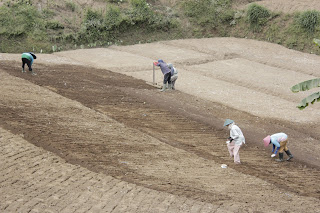The leaves are part of the plant that has a function as a place of assimilation, transpiration, respiration, and photosynthesis. The leaves have the form of a thin, green, and its position on the stem facing upwards is already aligned with the function of leaves for plants, namely:
1. transpiration
2. respiration
3. assimilation
4. photosynthesis
Plants that have full leaves still a little kind. Plants have a full leaf when having vaginal, petioles, and lamina. In adapting to the environment, the leaves change its shape according to environmental conditions. Changes in leaf shape called a modified leaf. leaf modification includes several parts:
a. bud. seen as forming the stem and leaves.
b. interest.
c. spines. creation stems and leaves to reduce evaporation.
d. tunica
e. bulbs
f. assidium
g. utriculus
Often we find the term Filofaxes. Filofaxes is a method to count the number of leaves on one plant using Fibonacci series.
Filofaxes in the monocotyl plant there is only one leaf attached to the stem, while the dicotyl plant, the number of leaves attached to the stalk can be one or more.
there are several types of filofaxess:
a. at 1 stalk attached one leaf
1. transpiration
2. respiration
3. assimilation
4. photosynthesis
Plants that have full leaves still a little kind. Plants have a full leaf when having vaginal, petioles, and lamina. In adapting to the environment, the leaves change its shape according to environmental conditions. Changes in leaf shape called a modified leaf. leaf modification includes several parts:
a. bud. seen as forming the stem and leaves.
b. interest.
c. spines. creation stems and leaves to reduce evaporation.
d. tunica
e. bulbs
f. assidium
g. utriculus
Often we find the term Filofaxes. Filofaxes is a method to count the number of leaves on one plant using Fibonacci series.
Filofaxes in the monocotyl plant there is only one leaf attached to the stem, while the dicotyl plant, the number of leaves attached to the stalk can be one or more.
there are several types of filofaxess:
a. at 1 stalk attached one leaf
b. at 1 stalk attached two leaves
c. at 1 stalk attached three leaves






